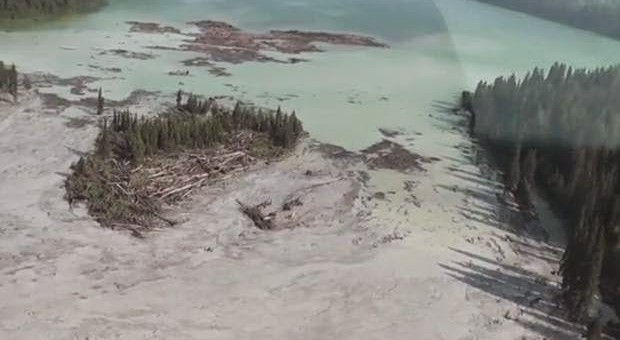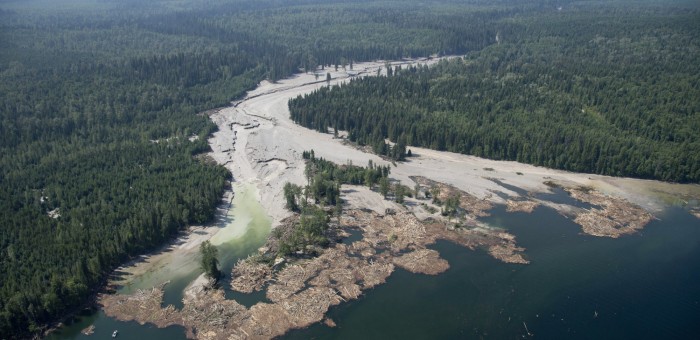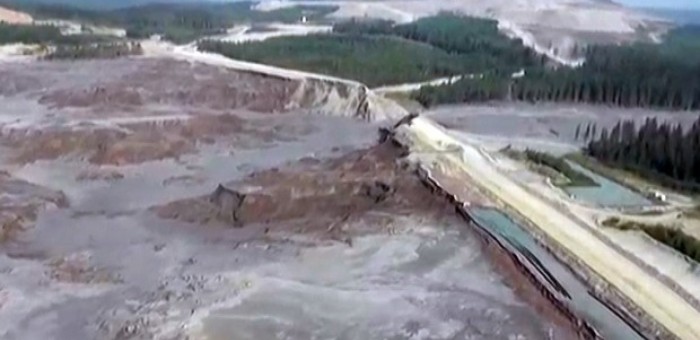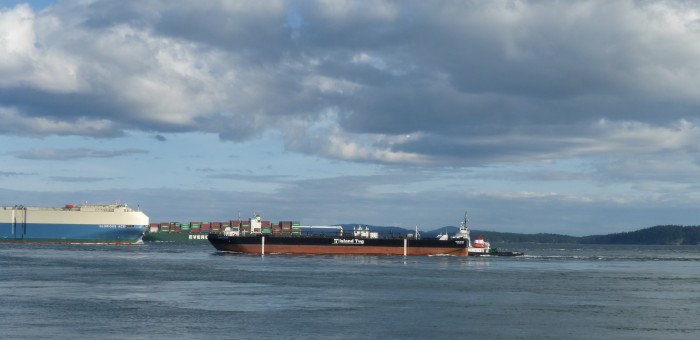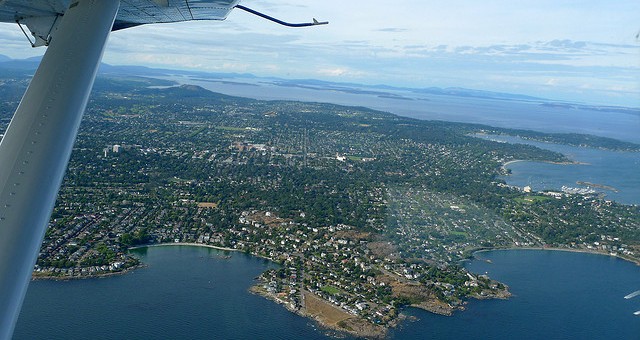Issues & Community Blog - Andrew Weaver: A Climate for Hope - Page 186
Mine tailings ponds need immediate inspection
VICTORIA, B.C. – In light of the tragic industrial disaster at Mount Polley Mine south of Quesnel, the B.C. Green Party is calling on the provincial government to require every mine in the province to undertake an independent engineering report of their tailings storage facilities.
“The B.C. government has the legislative ability to require these engineering reports be submitted” said Andrew Weaver Oak Bay-Gordon Head MLA, and Deputy Leader of the B.C. Green Party. “Furthermore the BC government has the responsibility to ensure that other tailings ponds are not at risk of failure. By analyzing those facilities and publishing the results, they will go a long way towards reassuring British Columbians that their government is looking out for their best interests.”
As the effort to address the immediate needs of the community and the environment in the area around the Mount Polley Tailings Pond disaster continues, the government must also turn their attention to other communities across British Columbia who may be facing similar risks.
“I spoke with First Nations leaders in this territory. I learned of their frustration due to the lack of communication by the government and operator, they are not getting any information,” said Adam Olsen, Leader of the B.C. Green Party. “They are very concerned about this situation and shared the fear that this will not be the only disaster.”
“This has been a wake up call for us all,” said Weaver. “The Minister admitted this accident should not have happened and it goes without saying we need a comprehensive assessment of our situation.”
Section 18 of the BC Mines Act empowers the government to order a mine operator to provide an independent study prepared by an engineer respecting the health and safety of its “equipment, buildings workings or structures…”.
“The provincial government should start with the Gibraltar mine just north of WIlliams Lake,” said Olsen. “People are really concerned with a toxic mining slurry making its way to the Fraser River, and so they should be, as it has the potential to shut down one of the largest sockeye runs in the world – forever. We could all rest a little easier knowing that facility is sound.”
Mount Polley Tailings Pond Breach
Mount Polley Tailings Pond Breach
Looking at the pictures in the news this week of the environmental disaster that took place in central BC takes your breath away. I felt it was important to write a detailed review of what we know now and what questions need to be asked going forward. I will provide as much information I can as things develop.
In the early morning of Monday, August 4th 2014, a 4km long tailings pond located at the Mount Polley gold and copper mine (located in central British Columbia) breached its earthen dam, and left a 45-metre wide track of muck running into the nearby lake near Likely, BC. The mine and tailings pond is owned and operated by Imperial Metals Corporation. In a press release on August 5th 2014, the company said the cause of the breach is unknown at this time, and the structure (which was independently built) was operated within the parameters given to the company, as regulated by the Ministry of Energy and Mines.
A state of emergency was declared for the Cariboo region in the morning of August 6th.
The breach released ~10 billion litres of water and 4.5 million cubic metres of silt into Polley Lake prompting drinking water warnings for Quesnel Lake, Polley Lake, Hazeltine Creek, Cariboo Creek and the Quesnel River up to its intersection with the Fraser River.
In an FAQ on tailings pond, CBC says that:
“The substances found in tailings ponds depend on the type of mining operation. Last year, Imperial Metals Corp. reported that tailings from its Mount Polley copper-gold mine contained thousands of tonnes of copper, zinc, phosphorus and managanese along with:
- 138 tonnes of cobalt, 71 tonnes of nickel, 3.6 tonnes of antimony, 84,831 kilograms of arsenic, 38,218 kilograms of lead, 8,695 kilograms of selenium, 562 kilograms of mercury, 995 kilograms of cadmium.”
A science and policy advisor for the David Suzuki Foundation says that the most hazardous heavy metals to human and environmental health are arsenic, cadmium, copper, lead and mercury.
The breach appeared to catch the president of Imperial Metals by surprise, as he denied any indication that the dam would burst. In a town hall, Brian Kynoch said “if you asked me two weeks ago if it could happen, I would have said it couldn’t.”
However, this dam has been the subject of at least one review commissioned by the Williams Lake First Nation and Imperial Metals in 2009 and published in 2011. In the report, Brian Olding, operator of Brian Olding and Associates Ltd. (the environmental consultant that was retained for the report), said the tailings pond was accumulating water so quickly that it would have needed to discharge about 1.4 million cubic metres of water a year to keep its levels stable. This would require the dam to find a sustainable means of discharging water to prevent excessive build up. Oldings assessment found the pond levels were already getting too high five years ago.
In 2012, the government granted the permit amendment that Imperial Mines had requested, allowing it to discharge 1.4 million cubic meters of wastewater per year into Hazeltine Creek. The second permit amendment, submitted this summer, was under consideration by the ministry at the time of the tailings pond breach.
The report was also critical of the company for not having a contingency plan in case of a tailings pond failure. I do not know whether such a plan was developed in the period between the report being submitted to the company and government, and the accident on Monday. It is also worth noting that Olding says no analysis of the dam’s structural integrity was conducted, despite his request that a structural engineering company be retained.
An initial CBC investigation into the accident also provided a detailed review of the BC Government’s interactions with the Mount. Polley Mine.
In the article, the BC Ministry of Environment claims that they warned Imperial Metals about the Mount Polley mine tailings pond levels repeatedly before the breach.
In an email to CBC News, a Ministry of Environment spokesperson said it gave the firm its latest of five warnings in May, this time for exceeding the permitted height of wastewater within the tailings pond. However these warnings may have been given over the course of many years, referring to different incidences and violations.
The first of these, in 2009, prompted the independent report referred to above.
The CBC article went on to report that the B.C. Ministry of Environment reported conducting 14 inspections of the Mount Polley mine since the permit amendment was granted. On one of these inspections, that took place in August 2012, the ministry found the mine failed to report the excessive height of wastewater for the perimeter pond. The pond subsequently overflowed, releasing ~150 cubic meters of wastewater over 13 hours.
In April of this year, the ministry found the mine experienced high flows due to spring runoff, which blocked the pump system, resulting in an overflow, for which an advisory was issued. In this case the water did not reach the creek.
Finally, three months ago the ministry warned Imperial Metals yet again, after the height of wastewater in the tailings pond exceeded authorized levels.
According to the ministry, the wastewater level eventually returned to normal one month later.
In summer 2014, the firm applied to amend its permit again, this time to allow a discharge of 3 million cubic metres of treated wastewater or ditch water into Polley Lake, which overflows into Hazeltine Creek.
At least one journalist is pointing out that although the initial reaction is to blame the company, “the buck really stops with the province”, which is responsible for the regulatory culture in the province.
Stephen Hume notes that accidents like this (although not to this scale) have been happening repeatedly. In his article he cites a warning given in 2012 by The University of Victoria’s Environmental Law Centre, which noted that environmental assessment certificates for mines issued by government are often “vague and unenforceable.” Furthermore, it said that by 2008 the number of mine inspections had fallen to half what they were in 2001 and Ministry of Environment staff shrank by 25 per cent.
This is an accident that should not have happened. The warning signs were there, and yet no action took place. How many warnings must the government issue to a company before more significant action is taken? We need to ensure that the government has the necessary regulatory teeth and resources to act to prevent disasters such as the one that occurred at Mount Polley.
Going forward, we need to ensure that our first priority is that the health and well being of those affected is being looked after. This needs to include ensuring that the short term financial needs of local communities including First Nations are met, as many people find themselves without an income, and with new costs.
From the government’s side, we are still waiting for their report on the water quality in the area. In the government’s press release, the Ministry of Environment said it was on-site conducting water tests to determine the full extent of potential environmental impacts. Water sampling took place the evening of August 4th with samples having been sent for analysis, and results expected later this week. I have called on the Minister of Environment to consider independent testing to reassure local residents and those potentially affected downstream that the information is complete and impartial.
Following this, we need to start addressing how clean up of this disaster will occur, including short and long term mitigation of impacts on humans and the environment.
I will be working hard on this issue in the weeks and months that follow. At the moment I have a number of questions that I will be seeking answers to, including:
1) What support is government offering to local communities including local First Nations to help fund this period of transition?
2) Will there be any impacts on the Fraser River salmon run?
3) What is the best practice in cleaning up a tailings pond spill, especially given the limited number of incidences in BC that this has happened (at this time Minister Bennett is saying this has never happened before in the province)?
4) What contingency plans exist in government to help support its efforts financially to address this disaster, including if Imperial Metals declares we’re unable to pay for the cleanup?
5) What role has the government’s cuts to enforcement and their approach to enforcement played in causing this accident?
6) Are there other tailings ponds that should be red flagged?
Please don’t hesitate to contact my office if you have any questions.
Testing and Cleanup is the Priority for Mount Polley Mine Breach
Media Statement: August 6, 2014
Testing and Cleanup is the priority for Mount Polley mine breach
For Immediate Release
Victoria B.C. – The tailings pond breach at the Mount Polley copper and gold mine near Likely B.C. is estimated to have released 10 billion litres of potentially contaminated water, and 4.5 million cubic metres of metals-laden fine sand. All of the mine tailings are an eco – system and financial risk flowing into the creeks, rivers and lakes of the Cariboo region, possibly into the Fraser system, just as salmon return This is an unprecedented situation for the province, with both the company and the government appearing ill-prepared to respond.
Stark warnings to the residents of the region: ‘do not even touch the water’ and now, two days after the breach, a local state of emergency has been declared. The immediate concern is ensuring downstream drinking water is safe for use, Longer term, there are questions on how far the contaminated sediment will spread through the river and lake systems, the potential effects on groundwater and on fisheries and wildlife.
“The problem now is not what we do know, but what we don’t know” said Andrew Weaver. “I have asked the Minister of Environment to consider independent testing of the water and sediment mixture to reassure local residents, and everyone potentially affected downstream, that the information is complete and impartial”
Media Contact
Mat Wright – Press Secretary, Andrew Weaver MLA
mat.wright@leg.bc.ca
1 250 216 3382
Kinder Morgan’s Disappointing Answers
This post is part of an ongoing series in which MLA Andrew Weaver will be sharing key information from inside the National Energy Board hearings on Kinder Morgan’s Trans Mountain pipeline proposal.
In recent weeks there has been widespread news coverage concerning the disappointing and incomplete answers Trans Mountain provided many intervenors when asked about their pipeline proposal.
Back in May, my team and I spent countless hours poring over the 15,000 page application, dissecting Kinder Morgan’s claims and evaluating their evidence. For a small office like mine, that is a big commitment. Yet we gave it the due diligence it deserved because my constituents, and British Columbians across the province, have been clear: They are concerned about the prospect of substantially increasing heavy oil tanker traffic on our coast and they expect their MLAs to do something about it.
Collectively, intervenors submitted more than 10,000 questions to Trans Mountain. Of these, I submitted nearly 500. Unfortunately, the answers we received failed to address many of the questions I, and other intervenors, asked.
To give you a sense of what I mean, let me offer an example.
Geological and Geographic Factors
One of the biggest concerns for south island residents is the risk of an oil spill. In reviewing the oil tanker route analysis, I found that, surprisingly, the section on “Geographic and Geological Factors” along the route was only three sentences long. This was surprising because geographic and geological factors—such as islands and rocky shorelines—often play a role in incidents that lead to oil spills. Not only that, but according to the Federal Tanker Safety Expert Panel the route these tankers would take is a “very high risk” area.
Here’s that entire section on “Geographic and Geological Factors”:
“The Southern coast of British Columbia has a wide range of geographic and geological formations. The proposed waterways have a variety of Sandy to rocky shore lines and scattered with islands, coves, and inlets. The proposed route is deep and wide enough and currently providing safe transit for vessels similar to the project vessels to and from Vancouver harbour.”
While I appreciate that ships already transit the area, this fact, on its own, does not provide an adequate assessment of risk along the route. I therefore asked Kinder Morgan to elaborate on this section and to provide a more complete assessment of geographic and geological factors that could contribute to an oil spill.
Unfortunately, Kinder Morgan’s response was to simply refer to me the very section I asked them to elaborate on. If I still wanted more information, they then suggested I “refer to the appropriate navigation chart”.
Challenging these Answers
I find this answer highly disappointing. Unfortunately, it is also typical of many of the answers we received.
If Kinder Morgan is truly trying to earn the social license to build this project and ship additional oil through our coastal waters, I think it is fair to require them to have a more detailed assessment of the islands and geological formations that make up the route they will use.
Let me be clear: My concern, at this stage, is not about receiving answers that I disagree with. We received many answers that I believe British Columbians will be concerned about—but at least in those cases we received answers.
My concern here is that Kinder Morgan is refusing to provide actual answers to important questions.
The Province of British Columbia, the City of Burnaby, the City of Vancouver and many other intervenors have all voiced this same concern.
These questions form the basis of the entire hearing process. This is where we get to test the validity of Trans Mountain’s evidence so that in the end the National Energy Board can make a fully informed decision about whether the pipeline should be approved or not.
The fact is that given the massive outpouring of opposition to the Northern Gateway pipeline and the serious concerns that have been raised about heavy oil spills, it is hard to believe that Kinder Morgan would not be doing everything possible to address the concerns of intervenors and of all British Columbians.
Poll shows Greater Victoria residents keen on governance study
Media Statement: July 29, 2014
Poll Shows Greater Victoria Residents Keen on Governance Study
For Immediate Release
Victoria B.C. – An Angus Reid survey, commissioned by Amalgamation Yes, clearly shows the vast majority of residents, in all 13 Greater Victoria municipalities, are concerned about local and regional governance and support exploring options.
The key findings are:
89% of respondents support a non-binding referendum on amalgamation.
84% of respondents are in favour of some sort of amalgamation.
80% of respondents support an independent, comprehensive cost-benefit study and analysis of amalgamation.
While a majority of respondents are satisfied with the services they receive from local government, there are concerns around the efficiency of service delivery across the Capital Region, as well as with planning, decision making and cooperation between municipalities.
There is an opportunity to place a non-binding question on the ballot for the November municipal elections which would directly inform councils and the CRD about existing support for a regional governance study. The Province can fund a study should a group of municipalities, or the region as a whole, seek assistance.
“This is an important survey. People in Greater Victoria are clearly engaged and interested in how their communities are governed and want a say on future directions. I encourage Mayors and councils in each municipality to put a question on November’s ballot on studying options for improving local and regional governance,” says Andrew Weaver.
For the full Angus Reid survey results, analysis and background material please see www.amalgamationyes.ca
Media Contact
Mat Wright – Press Secretary, Andrew Weaver MLA
mat.wright@leg.bc.ca
1 250 216 3382

